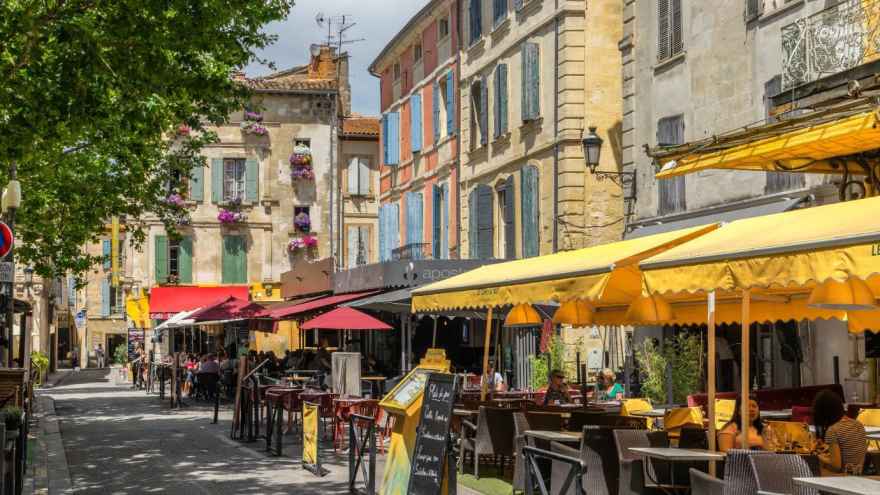Five Questions for Author Linda Seidel about van Gogh and Summer Reading

The following was published in UChicago News on July 19, 2023.
By Emily Rosenbaum
In “Vincent’s Arles,” art historian and University of Chicago Emerita Prof. Linda Seidel takes readers on a tour of Arles, France, where Vincent van Gogh spent 15 months, beginning in 1888. The artist produced several of his best-known and most striking paintings during this time. The following interview has been edited and condensed.
Q: Van Gogh’s stay in Arles was productive and resulted in bold art. How was his time there transformational for him?
Vincent had connected with the Impressionists in Paris and was inspired by their brighter colors and technique; this began a transformation in his work that came to fruition in Arles. Once settled there, he came to regard the Impressionists as too rooted in the optical and, in Seurat’s case, as overly constrained by scientific color theory. He began to appreciate the value of the imagined or reflected upon, something that Gauguin’s short visit with him reinforced, despite its grim end. Gauguin preached rumination rather than spontaneity in painting.
Another factor was Vincent’s ability to engage at length with orchards and gardens instead of being pushed along while sketching a building or river view (which he said often happened in Paris). This connected him with the landscape and what I perceive to be a perdurance of place in his Arles’ panels as well as those that followed during his time at St-Remy and Auvers. There’s a combination of the immediacy of view with the sense of memory; he’s adjusted the shapes, organized colors and made emphases that the Impressionists (deliberately) don’t do while heightening their freshness of touch.
I believe that Vincent’s increasing awareness and appreciation of Arles (and Provence’s) long history fostered a profound connection to the distinctness of the terrain (to lean on the very French term terroir) and that is what distinguishes these paintings from those that came before, both his and others’. References in his letters identify multiple aspects of this keen sense of the local past, including his dread of Nero’s reign when he writes of the church portal, his dream of Boccaccio and Petrarch walking among the cypresses and his connection of the tree to an obelisk–one of which graces the main square in Arles.
Q: What do you think is special about Arles today?
The everywhere present yet lazy mixture of old and new in Arles is what charms and captivates. I wrote the book because I worried that the old is being diminished by attention to the “new” with its emphasis on Vincent’s wanderings and all that is associated with them; past and present are being compartmentalized and relegated to museums or isolated as notable “monuments.” I wanted to retain awareness of the deep connections between them, which Vincent experienced, and which I believe 12th-century visitors did too.
Q: Why do you think van Gogh still fascinates us?
Undoubtedly, it’s the palpable present-ness of his paintings, their compelling materiality packed into relatively small (accessible) size. They are physically embraceable. The boldness of his pigments and the varied physical textures of his brush (and pen) strokes engage our eyes, carrying us across the sky or the field he’s depicted. That sense of movement is really there, and the viewer gets it without being told.
Of course, the story of mental illness is another draw to his works, one that I think is overworked.
Q: What’s the last thing you read that you found particularly memorable or interesting?
I frequent used bookstores in my little Maine village during the summer and just found a short book of essays by A. Bartlett Giamatti on baseball, “A Great and Glorious Game” (1998). The way he teases out resonances from simple prosaic things is memorable.
Q: What are you reading this summer?
This year I fell behind in reading new books by colleagues and acquaintances and am now catching up on four of them and learning a lot. Pamela H. Smith’s “From Lived Experience to the Written Word” explores the practical knowledge artisans originated and often recorded, upon which modern texts rely. I love the way she’s tested some of the old “recipes.”
Cynthia Salzman’s “Plunder: Napoleon’s Theft of Veronese’s Feast” on the 16th century making and late 18th century theft of Veronese’s largest painting tells two remarkable stories and is filled with unforgettable comments about historical figures, such as Talleyrand’s dismissal of Josephine Bonaparte as lacking intelligence but managing brilliantly without it.
Carol Loeb Shloss’ biography of Ezra Pound’s daughter, Mary de Rachewiltz, “Let the Wind Speak,” is entangling me in rich prose along with a chain of hidden and often dark secrets.
And Tess Wilkinson-Ryan’s “Fool Proof: How Fear of Playing the Sucker Shapes Our Selves and the Social Order–and What We Can Do About It” combines practical experience and theoretical research in sly ways, making me see things I hadn’t thought about, even as its discussion of legal issues is, in places, above my pay scale.
“Vincent’s Arles” is available from UChicago Press.